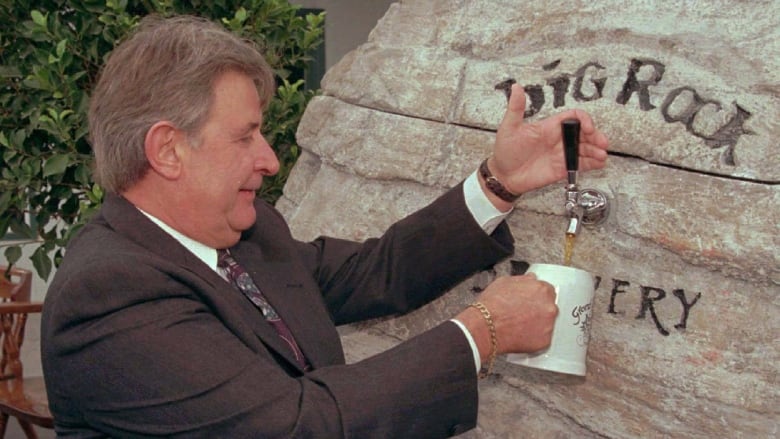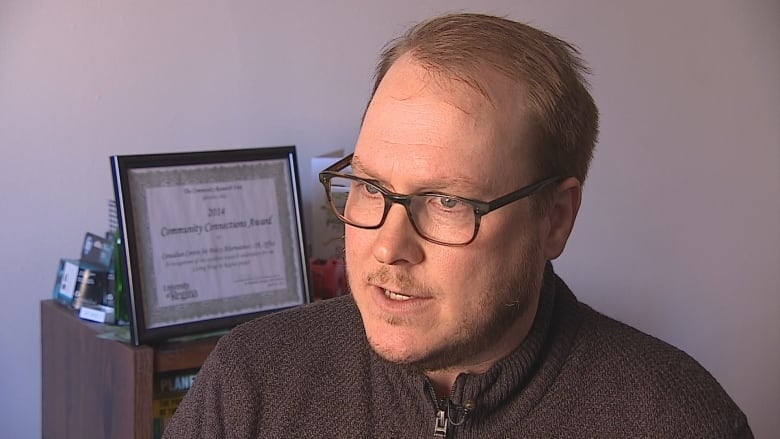In 1993, Alberta said a private liquor model would bring more choice and stable prices. Did it?
As Ontarios LCBO battle concludes, Alberta mulls expanding access further into grocery and convenience stores

"The Alberta Liquor Control Board is no longer our spiritual leader," Calgary Herald columnist Don Martin declared in a Sept. 3, 1993, column.
Martin was reacting to news that the Alberta government would give upexclusive control over liquor, having regulated sales via the Alberta Liquor Control Board since prohibition ended in the province in 1924.
"It could be the best retail opportunity since the dawn of rental videos," Martin went on to say.
While shares of Blockbuster Video no longer hold the same appeal they once did, Alberta's 1993 venture into privatized booze has led to a dramatic reshaping of the liquor landscape.
In recent weeks, as Ontario has been engaged in debate around the future of the Liquor Control Board of Ontario (LCBO), some in that province have turned their eyes to this other "Alberta model."

Meanwhile, Alberta has been weighing the idea of expanding its access further, to potentially expand alcohol sales into grocery and convenience stores in the province.
The province's Service Alberta and Red Tape Reduction Ministry is currently reviewing the results of a MLA committee that recently met with grocers and liquor industry representatives.
"The results will be used to help inform how Alberta's fully private liquor model can continue to support the best interests of both businesses and Albertans," wrote Brandon Aboultaif, a press secretary to Minister Dale Nally, in a statement.
Alberta's move to privatize liquor retailing was the first such move in the country. In selling the plan, the Ralph Klein government argued it would deliver a larger selection of liquor, stable consumer prices and establish a new base of small businesses.
Did it deliver?
Access
The results speak for themselves on the density front. Sixty-four per cent of Alberta's population now lives within one kilometre of a liquor store, according to a 2018 Statistics Canada report, the most recent data available.
That's much higher than other provinces British Columbia saw a 41 per cent figure, while the figure was listed as being below 30 per cent elsewhere in the country.
In 1993, there were a total of 803 liquor retailers in the province, selling a total of 2,200 products, according to the Alberta Gaming, Liquor and Cannabis Commission (AGLC).
At that time, pricing was set by the government and was consistent across all stores.
As of March 31, 2023 nearly 30 years later there were a total of 2,418 liquor retailers in the province selling 33,628 products, according to the AGLC.
Today, retailers set their own shelf prices. Even warehouse retail store Costco has jumped into the action, with Alberta the only province home to standalone Costco Liquor stores.

With 33,628 products on the shelves, the province has also seen an explosion of selection.
But given the fact that private stores are not required to fall under any sort of uniformity when it comes to product selection, your mileage may vary when seeking out a specialty product. Certain larger urban warehouse-style vendors will have more selection compared to a rural liquor store with limited stock, for instance.
Employment
And what about employment? In 1993, when Alberta's liquor stores and warehouses were unionized, the Alberta Union of Provincial Employees expressed concern about the estimated 1,500 job losses that would result from the move.
Today, the Alberta Liquor Store Association estimates that there are somewhere around 12,000 employees in the industry. The association says that figure is based on an average of six to seven employees per store, warehousing, and delivery, plus agents in the province.
"You have an explosion of liquor stores, you're going to have an explosion of jobs," says Simon Enoch, director of the Saskatchewan office for the Canadian Centre for Policy Alternatives think-tank.
"But it was an explosion ofmostly minimum wage jobs."
WATCH | From the CBC archives, liquor store workers protest the Alberta government's move to privatize in 1993:
Douglas West, a professor emeritus in the department of economics at the University of Alberta, conducted a study that was included in a 2003publication for theFraser Institute think-tank.
It found that liquor store employee wages dropped under privatization, but liquor store employment increased with the expansion in store count.
Consumer prices
Perhaps the chief area of interest is prices, both on the consumer side and on the government revenue side.
Though his study was published in 2003, West said the large impacts of privatization would have been felt by then, with additional changes coming along mainly on the margins.
He said consumer prices in Alberta are influenced by supplier-set wholesale prices, store and governmentmarkups and the timing of limited-time offers. All the factors at play means it's challenging to track retail price changes over time.
"What I concluded in the data that I looked at in my own study, is that there was some increase in retail prices as a result of privatization, but it was not large," West said.
"But it depends on product category, and the time period."
Given the competition in the retail market, it's possible for consumers to shop around for lower prices. Over time, consumers likely become attuned to stores with lower prices and frequent markdowns in price. Someadvocatefor any analysisto utilize the lowest available price in the province, not a median measurement.

Consider a 750 mlbottle of Crown Royal whisky. On July 23, the LCBO website priced that out at $33.95, while New Brunswick Liquor listed it at $31.29 per unit.
The same day, the Real Canadian Liquorstore chain, which operates in Alberta and Saskatchewan, priced that same bottle four cents higher than the LCBO, at $33.99. A local chain with five locations in Calgary, meanwhile, advertised a 27 per cent discount on the liquor, pricing it out at $26.99.
A 2012 report from David Campanella, then the public policy research manager for the Parkland Institute, and Greg Flanagan, a public finance economist, concluded that privatization has led to Albertans paying more compared to public stores.
In addition, when Alberta privatized, it changed the tax systemfrom a percentage of the price to a unit tax.
"It doesn't matter what it costs. The tax is flat," Enoch said. "Which dings lower-cost alcohol, right? Because everything is charged at the same tax rate."
Government revenues
Those in Ontario with their eyes on Alberta note that, in 2023, Alberta liquor sales generated about $177 per person annually in government revenue, given a population estimate of 4.6 million on April 1, 2023. That compares to around $159 per person in Ontario.
But that doesn't factor in what some researchers refer to as the "alcohol deficit" what increased alcohol consumption leads to when it comes to costs associated with health care, criminal justice, and more an area in which Ontario is seeing lower costs compared to Alberta, according to a recent report. More on that later.
In his 2003 report, West stated that Alberta government revenues have tended to increase under privatization.
At the time of privatization, the government committed to revenue neutrality using flat markups.
"They didn't want to see this as being a possible revenue grab so they've adjusted the markups, from time to time, to try and maintain revenue neutrality," West said.
"They did that for a number of years afterwards. But then at some point, they decided to abandon revenue neutrality, and decided that they could increase markups, and increase government revenues as a result."

Despite these efforts, analyses have suggested that the government's approach has led to a loss, over time, in government revenues. By not maintaining the 1993 level of tax revenue per litre of alcohol sold, Campanella and Flanagan estimated that number at nearly $1.5 billion in their 2012 report.
Writing for the Fraser Institute, senior fellow Mark Milkesuggested that the lower revenues were a result of the markup, not of privatization itself.
The provincial government, meanwhile, says its ongoing review is also studying whether changes are needed to modernize the liquor markup system, which was last reviewed in 2003.
"The review has taken a comprehensive view of liquor markups in the province, including concerns about how our markups support social responsibility,"Aboultaif wrote.
The 'alcohol deficit'
Still, others say that the social costs for Alberta having such a high density of liquor availability might wipe out any possible revenue gains.
This concept has been defined as the "alcohol deficit," studied as part of the Canadian Alcohol Policy Evaluation 3.0, published last year.
That study suggested that in 2020, Alberta saw $1.3 billion in alcohol revenues, but it saw $3.1 billion in alcohol harm costs, leading to a total alcohol deficit of $1.8 billion, which equates to $0.95 per standard drink sold.
Ontario, meanwhile, saw a total alcohol deficit of $1.9 billion, or $0.34 per standard drink sold, a considerably lower figure compared to Alberta.
Albertans also drink more alcohol annually compared to Ontario, and the rest of the country. According to the same report, 528 standard drinks are consumed per person in Alberta over the age of 15, compared to 487 across the rest of the country, and 457 in Ontario.
"It's not a coincidence, the higher consumption and permissive policies," wroteTim Naimi, the director of the University of Victoria's Canadian Institute for Substance Use Research, which produced the study, in an email.
He saidthat Alberta received the lowest alcohol deficit score of any province.
"Based on this, it would appear that Alberta's policies may be good for alcohol companies but a crummy deal for taxpayers."
All told, 30 years later, it's a mixed cocktail of results post-privatization something for jealous Ontarians to consider as they look to the west for solutions to their liquor access woes.













_(720p).jpg)


 OFFICIAL HD MUSIC VIDEO.jpg)
.jpg)



























































































